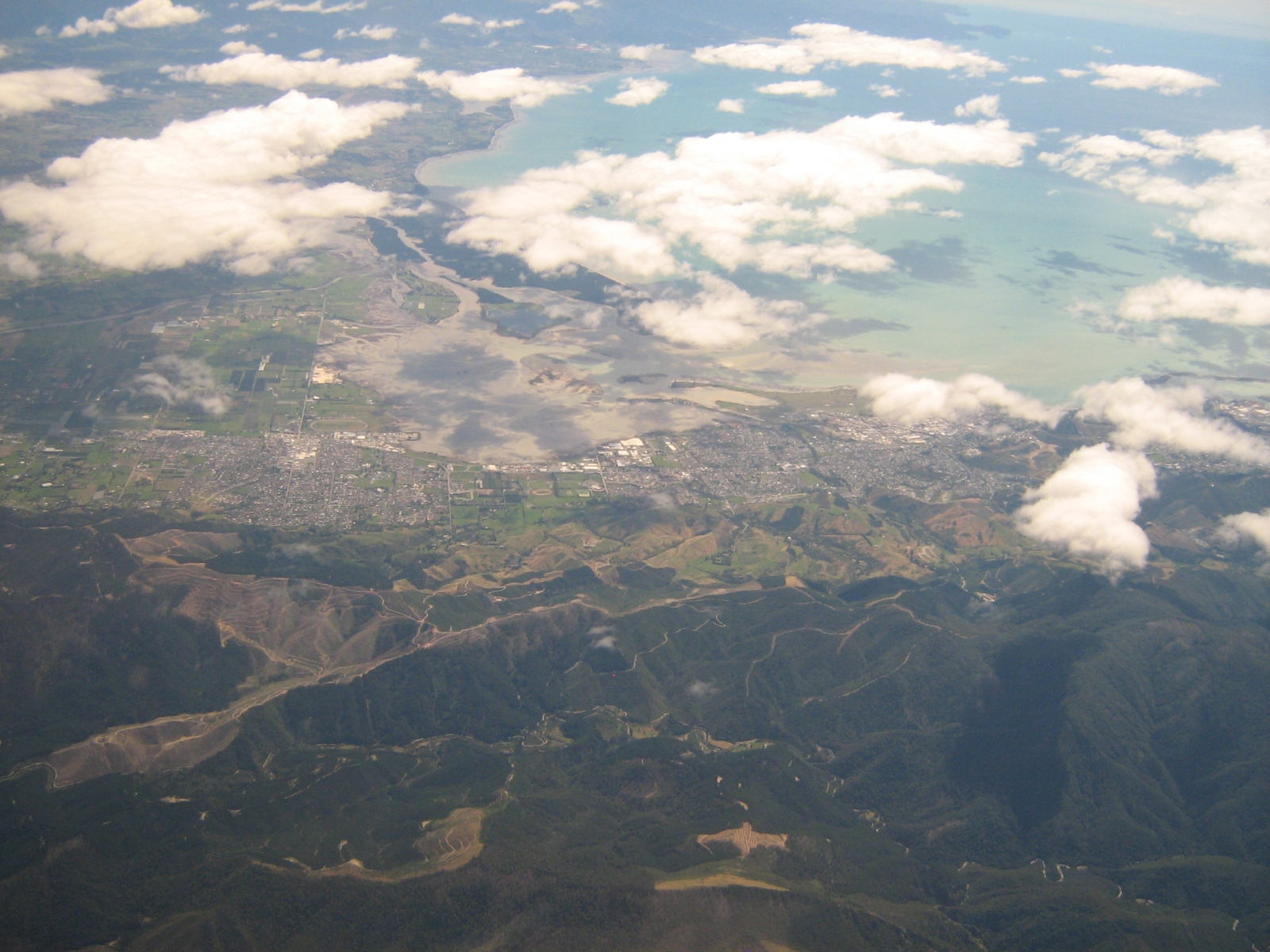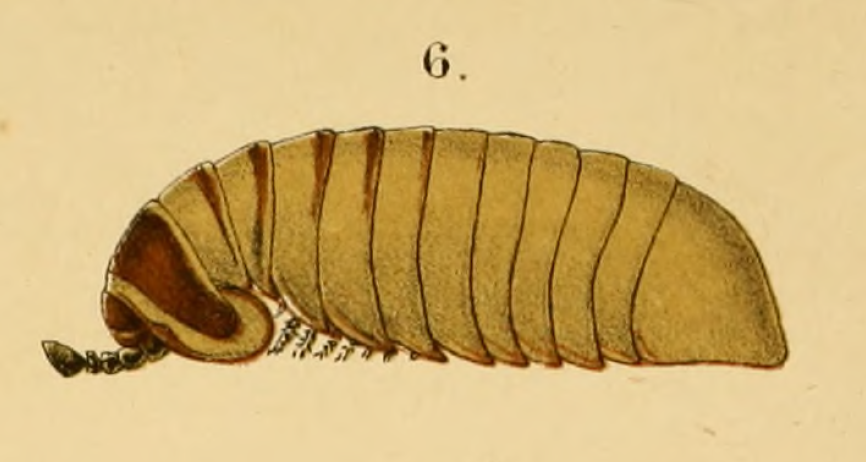|
Procyliosoma Delacyi
''Procyliosoma delacyi'' is a species of giant pill millipede found in New Zealand. Distribution ''Procyliosoma delacyi'' is found in Nelson Region, Nelson and Waikato. Taxonomy The species was originally named ''Zephronia De Lacyi'', in honour of the discoverer's brother-in-law, one Mr. De Lacy, "a gentleman very fond of natural history, and who studies it in his New Zealand home." It was described in 1859, and was the first pill millipede described from New Zealand. The scientist who discovered it, Adam White (zoologist), Adam White, noted that "it is a pretty and very distinct species, the first I have seen from New Zealand". There are two subspecies, ''Procyliosoma delacyi delacyi'' and ''P. delacyi striolatum''. Description ''Procyliosoma delacyi'' is a "very highly polished" pill millipede, with a "few scattered punctures on each segment". Preserved specimens are greyish-green to light brown in colour. References {{Taxonbar, from=Q21299494 Sphaerotheriid ... [...More Info...] [...Related Items...] OR: [Wikipedia] [Google] [Baidu] |
Adam White (zoologist)
Adam White (29 April 1817 – 30 December 1878) was a Scottish zoologist. Biography White was born in Edinburgh on 29 April 1817.White, Adam (1817–1878), naturalist by Ann Datta in the ''''. He became acquainted with , Keeper of Zoology at the |
Giant Pill Millipede
Sphaerotheriida is an order of millipedes in the infraclass Pentazonia, sometimes known as giant pill millipedes. They inhabit Southern Africa, Madagascar, South and Southeast Asia, Australia and New Zealand. Like the Northern Hemisphere pill millipedes of the order Glomerida, these millipedes can roll into a ball when disturbed. When they are rolled-up, most sphaerotheriidans reach a maximum size of a cherry or golf ball, but some species from Madagascar can even reach the size of an orange (an example of island gigantism; illustration . When rolled-up, predators are unable to unravel giant pill millipedes since the margins of their second and last dorsal plates fit perfectly into one another, creating a sealed ball. A few giant pill millipede species are able to produce sound, the only millipedes known to do this. This order of millipedes is also unique in that some African species are used for medicinal purposes. Morphology Sphaerotheriidans are characterized by a relatively ... [...More Info...] [...Related Items...] OR: [Wikipedia] [Google] [Baidu] |
Nelson Region
Nelson () is a List of cities in New Zealand, city and Districts of New Zealand, unitary authority on the eastern shores of Tasman Bay at the top of the South Island of New Zealand. It is the oldest city in the South Island and the second-oldest settled city in the country; it was established in 1841 and became a city by British royal charter in 1858. Nelson City is bordered to the west and south-west by the Tasman District and to the north-east, east and south-east by the Marlborough District. The Nelson urban area has a population of , making it New Zealand's 15th most populous urban area. Nelson is well known for its thriving local arts and crafts scene; each year, the city hosts events popular with locals and tourists alike, such as the Nelson Arts Festival. Naming Nelson was named in honour of Admiral Horatio Nelson, 1st Viscount Nelson, Horatio Nelson, who defeated both the First French Empire, French and Spanish fleets at the Battle of Trafalgar in 1805. Many roads ... [...More Info...] [...Related Items...] OR: [Wikipedia] [Google] [Baidu] |
Waikato
The Waikato () is a region of the upper North Island of New Zealand. It covers the Waikato District, Waipā District, Matamata-Piako District, South Waikato District and Hamilton City, as well as Hauraki, Coromandel Peninsula, the northern King Country, much of the Taupō District, and parts of the Rotorua Lakes District. It is governed by the Waikato Regional Council. The Waikato stretches from Coromandel Peninsula in the north, to the north-eastern slopes of Mount Ruapehu in the south, and spans the North Island from the west coast, through the Waikato and Hauraki to Coromandel Peninsula on the east coast. Broadly, the extent of the region is the Waikato River catchment. Other major catchments are those of the Waihou, Piako, Awakino and Mōkau rivers. The region is bounded by Auckland on the north, Bay of Plenty on the east, Hawke's Bay on the south-east, and Manawatū-Whanganui and Taranaki on the south. Waikato Region is the fourth largest region in the c ... [...More Info...] [...Related Items...] OR: [Wikipedia] [Google] [Baidu] |
Transactions Of The Royal Society Of New Zealand
The ''Transactions and Proceedings of the Royal Society of New Zealand'' was a scientific journal and magazine published by the Royal Society of New Zealand. Before 1933 the society was called the New Zealand Institute, and the journal's name was ''Transactions and Proceedings of the New Zealand Institute''. It was active between 1868 and 1961 and was the most important scientific journal in New Zealand New Zealand () is an island country in the southwestern Pacific Ocean. It consists of two main landmasses—the North Island () and the South Island ()—and List of islands of New Zealand, over 600 smaller islands. It is the List of isla .... Notable contributors * John Buchanan, illustrator and botanist who prepared many of the illustrations for the ''Transactions'' between 1868 and 1885 * Thomas Cheeseman, naturalist * William Colenso, botanist * Harold John Finlay, palaeontologist and conchologist * Charles Fleming, ornithologist and palaeontologist * James Hect ... [...More Info...] [...Related Items...] OR: [Wikipedia] [Google] [Baidu] |
Subspecies
In Taxonomy (biology), biological classification, subspecies (: subspecies) is a rank below species, used for populations that live in different areas and vary in size, shape, or other physical characteristics (Morphology (biology), morphology), but that can successfully interbreed. Not all species have subspecies, but for those that do there must be at least two. Subspecies is abbreviated as subsp. or ssp. and the singular and plural forms are the same ("the subspecies is" or "the subspecies are"). In zoology, under the International Code of Zoological Nomenclature, the subspecies is the only taxonomic rank below that of species that can receive a name. In botany and mycology, under the International Code of Nomenclature for algae, fungi, and plants, other infraspecific name, infraspecific ranks, such as variety (botany), variety, may be named. In bacteriology and virology, under standard International Code of Nomenclature of Prokaryotes, bacterial nomenclature and virus clas ... [...More Info...] [...Related Items...] OR: [Wikipedia] [Google] [Baidu] |
Sphaerotheriida
Sphaerotheriida is an order (biology), order of millipedes in the infraclass Pentazonia, sometimes known as giant pill millipedes. They inhabit Southern Africa, Madagascar, South and Southeast Asia, Australia and New Zealand. Like the Northern Hemisphere pill millipedes of the order Glomerida, these millipedes can roll into a ball when disturbed. When they are rolled-up, most sphaerotheriidans reach a maximum size of a cherry or golf ball, but some species from Madagascar can even reach the size of an orange (an example of island gigantism; illustration . When rolled-up, predators are unable to unravel giant pill millipedes since the margins of their second and last dorsal plates fit perfectly into one another, creating a sealed ball. A few giant pill millipede species are able to produce sound, the only millipedes known to do this. This order of millipedes is also unique in that some African species are used for medicinal purposes. Morphology Sphaerotheriidans are characterized ... [...More Info...] [...Related Items...] OR: [Wikipedia] [Google] [Baidu] |




